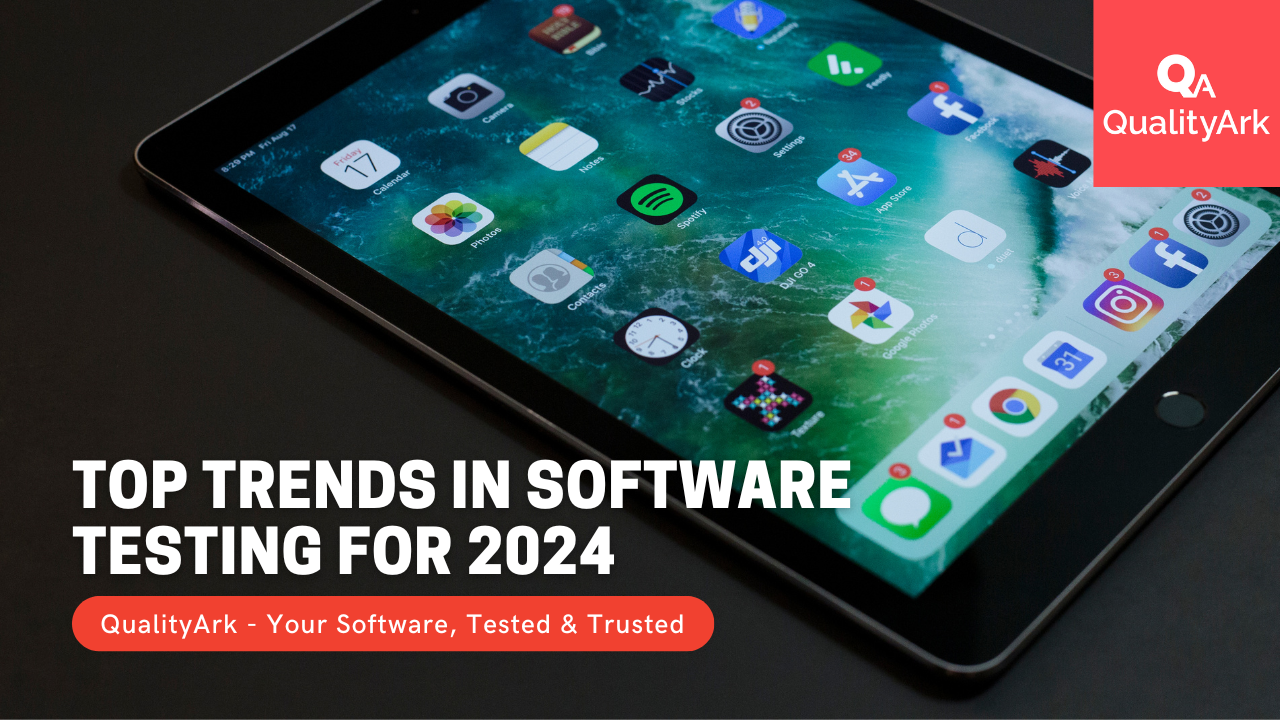Top Trends in Software Testing for 2024
As digital transformation accelerates across industries, the importance of robust software testing has never been greater. To meet the growing demands for speed, quality, and security, organizations must embrace modern testing practices and tools. In this article, we explore three key software testing trends for 2024 – Cybersecurity Testing, IoT Testing, and Low-Code/No-Code Testing – and explain how they help businesses stay ahead of evolving challenges.

1. Artificial Intelligence and Machine Learning Integration
Why It Matters
Artificial Intelligence (AI) and Machine Learning (ML) are transforming software testing by automating repetitive tasks, enhancing test accuracy, and predicting potential defects. These technologies enable testers to focus on more complex issues, thereby improving overall efficiency and productivity.
Key Benefits
- Automated Test Case Generation: AI can generate test cases based on user behavior patterns and historical data.
- Predictive Analytics: ML algorithms can predict potential problem areas in the software, allowing for proactive testing.
- Enhanced Accuracy: AI reduces human error, ensuring more accurate and reliable test results.
2. Shift-Left Testing
Why It Matters
Shift-left testing emphasizes early testing in the software development lifecycle (SDLC). By involving QA teams from the initial stages of development, organizations can identify and address defects sooner, reducing the cost and time required for fixes later.
Key Benefits
- Early Bug Detection: Identifying issues early in the development process minimizes the impact and cost of defects.
- Improved Collaboration: Encourages closer collaboration between development and QA teams.
- Faster Time-to-Market: Streamlined processes lead to quicker releases.

3. DevTestOps
Why It Matters
DevTestOps is an extension of DevOps that integrates testing into the continuous delivery pipeline. This approach ensures that testing is an integral part of the development process, rather than a separate phase
Key Benefits
- Continuous Testing: Enables continuous integration and continuous delivery (CI/CD) pipelines to test continuously at every stage.
- Quality Assurance: Maintains high-quality standards throughout the development lifecycle.
- Faster Feedback Loops: Provides immediate feedback, allowing for quicker adjustments and improvements.
4. Test Automation
Why It Matters
Automation remains a crucial trend in software testing, with advancements in tools and frameworks making it more accessible and effective. Automated testing accelerates the testing process, enhances coverage, and improves accuracy.
Key Benefits
- Speed and Efficiency: Automates repetitive tasks, reducing the time required for manual testing.
- Consistency: Ensures consistent execution of test cases.
- Scalability: Easily scalable to accommodate large and complex projects.

5. Performance Engineering
Why It Matters
Performance engineering goes beyond traditional performance testing to focus on performance throughout the SDLC. It aims to build performance into the software from the ground up, ensuring that applications meet performance standards from the outset.
Key Benefits
- Proactive Performance Management: Addresses performance issues early in the development process.
- Enhanced User Experience: Ensures applications run smoothly, providing a better user experience.
- Cost Efficiency: Reduces the need for expensive fixes post-release.
6. Cybersecurity Testing
Why It Matters
With the increasing frequency of cyber-attacks, cybersecurity testing has become more critical than ever. Ensuring that applications are secure from vulnerabilities and threats is paramount to maintaining user trust and protecting sensitive data.
Key Benefits
- Risk Mitigation: Identifies and addresses security vulnerabilities before they can be exploited.
- Compliance: Ensures compliance with industry standards and regulations.
- Trust: Builds user trust by protecting sensitive information.

7. Testing for the Internet of Things (IoT)
Why It Matters
The proliferation of IoT devices has introduced new complexities in software testing. Testing IoT applications requires a comprehensive approach that covers connectivity, security, and performance across various devices and platforms.
Key Benefits
- Comprehensive Coverage: Ensures all aspects of IoT applications are tested, from hardware to software.
- Interoperability: Verifies that devices and applications work seamlessly together.
- Security: Addresses the unique security challenges posed by interconnected devices.
8. Low-Code and No-Code Testing
Why It Matters
Low-code and no-code testing platforms are democratizing software testing by enabling non-technical users to create and execute tests. This trend is particularly beneficial for small and medium-sized enterprises (SMEs) that may not have extensive technical resources.
Key Benefits
- Accessibility: Allows non-technical users to participate in testing.
- Speed: Accelerates the testing process by simplifying test creation.
- Cost-Effective: Reduces the need for specialized testing resources.
Conclusion
The software testing landscape is continuously evolving, driven by technological advancements and changing business needs. Embracing these top trends in software testing for 2024 will help organizations stay competitive, deliver high-quality software, and meet the growing expectations of users.
Stay ahead of the curve by integrating AI and ML into your testing processes, adopting shift-left testing, embracing DevTestOps, and focusing on automation, performance engineering, and cybersecurity. By doing so, you’ll be well-equipped to navigate the complexities of modern software development and ensure your applications are robust, secure, and user-friendly.
By incorporating these trends into your QA strategy, you can ensure that your software remains at the forefront of quality and performance, setting you apart in the competitive landscape of 2024.
For more insights and detailed case studies, visit QualityArk.







